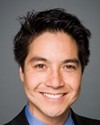I'm sorry. I didn't understand that.
Evidence of meeting #88 for Finance in the 41st Parliament, 1st Session. (The original version is on Parliament’s site, as are the minutes.) The winning word was rate.
A video is available from Parliament.
Evidence of meeting #88 for Finance in the 41st Parliament, 1st Session. (The original version is on Parliament’s site, as are the minutes.) The winning word was rate.
A video is available from Parliament.
November 5th, 2012 / 4:20 p.m.
Director General, Employment Insurance Policy, Department of Human Resources and Skills Development
I'm sorry. I didn't understand that.
NDP

Wayne Marston NDP Hamilton East—Stoney Creek, ON
Okay. Unemployment insurance was changed to employment insurance under the Liberal government. I'll actually name one so we don't get confused here. Prior to that change, the concept of unemployment insurance was that if you lost your job, because you had paid premiums and your employer paid premiums to the government, that money was used. If there hadn't been enough in the account, the government would have added more to cover it. It was underwritten by the Government of Canada.
The concept that Canadian workers have is that there was an unemployment insurance fund that they were paying into. We were of the understanding that it was a separate amount of money and that it wasn't in general revenues in those days. The change that took place in the nineties was that they shifted it to general revenues and at that point in time—the dollar amount we were hearing thrown around was anywhere from $30 billion to $50 billion—it was used by the government of the day to pay down the debt.
My points were the general revenue aspect and that it was being underwritten by the Government of Canada at that time.
Chief, Labour Markets, Employment and Learning, Department of Finance
If the question you're asking is whether benefits paid out exceeded the amount of premiums that were collected on the part of the government—
Chief, Labour Markets, Employment and Learning, Department of Finance
—then yes. People were not denied benefits as a result of the fact that benefits paid out exceeded premiums that came in.
NDP

Wayne Marston NDP Hamilton East—Stoney Creek, ON
We understood that during that time there was a surplus in the billions, without our going back and forth on exactly what it was.
The point I was getting to is this. You're talking about, currently, a break-even point. Instead of $50 billion, let's say there had been $30 billion in there previously. In the last Parliament—I believe it was the last Parliament—there was a motion passed to take that money off the books.
From a technical standpoint, workers perceived the money that had been used to pay down debt was like a loan and had to be repaid by the government to the fund in order to be there for workers. It was written off the books; thus, we got into this.... Well, I guess it would have been in 2007 or 2008 that this occurred. We started this investment board, the board that was going to take care.
What I'm looking for, though, is when we get to the so-called “break-even point”, how much money would have to be on hand to have a break-even point?
Chief, Labour Markets, Employment and Learning, Department of Finance
On hand....
Director General, Employment Insurance Policy, Department of Human Resources and Skills Development
When the account is in cumulative balance, we're going to start the new rate-setting mechanism. We'll be looking seven years ahead. We'll be looking at the rate, over those seven years, that would be needed in order to be in balance at that time. That is the way the rate will be set.
I'm not sure if that answers your question.
NDP

Wayne Marston NDP Hamilton East—Stoney Creek, ON
No. What I'm looking for is this. Over this interim period of time, we will be having rate increases or not. We will have whatever is deemed effective to get us to a break-even point. At the break-even point, will there be any money on hand to backstop the needs of workers who happen to be unemployed, or are we at zero?
Chief, Labour Markets, Employment and Learning, Department of Finance
Once again, the EI account is consolidated. It's general revenues.
With respect to your question, if you're asking whether workers will be denied benefits as a result of the account being at zero—
NDP

Wayne Marston NDP Hamilton East—Stoney Creek, ON
No. I'm asking what amount of money has to be available to cover that, whether it's in general revenues or whether it's in a separate fund.
You've referred to a break-even point. Does that mean the break-even point is where the cash premiums coming in cover those people who are on EI? Is that what you mean by break-even?
Chief, Labour Markets, Employment and Learning, Department of Finance
The break-even point is when the EI operating account reaches cumulative balance. That means the debt is repaid to the EI operating account, which again I point out is consolidated.
NDP

Wayne Marston NDP Hamilton East—Stoney Creek, ON
I understand that. Thus the incoming revenue from premiums will cover the outgoing costs without any further costs anywhere else, but there's no extra money anywhere backstopping it, other than general consolidated revenues over here. In other words, we're completely away from where we were.
Conservative

Brian Jean Conservative Fort McMurray—Athabasca, AB
On the relevance to this particular section, I understand now why the government has limited some of the scope of the budget that the NDP wanted to ask questions on. They're just going fishing, and they're using a fishing reel that goes in every direction at once. I don't really understand what it has to do with the particular section that we're here to have the officials answer questions on. It's like a fishing expedition with a shotgun.
Conservative

The Chair Conservative James Rajotte
I think we are....
Mr. Marston, it was my understanding that you were done.
Conservative

The Chair Conservative James Rajotte
Let's try to keep it as close to the legislative amendments that are before us as possible.
Mrs. McLeod, please go ahead.
Conservative

Cathy McLeod Conservative Kamloops—Thompson—Cariboo, BC
Thank you, Mr. Chair.
I too was going to raise a similar point, although not as a point of order. I think we can spend a lot of time in terms of the history of the EI fund, but certainly I've heard many people say that this is a good idea in terms of moving forward. In the medium term it's an effective way to save some money by not having a board operating when it doesn't have the flexibility to do what its original mandate was, and to balance that out with the employers and the employees having increases that seem reasonable and that they can count on.
To me, it is a relatively straightforward section that I would hope would have support from all parties, because I think it's a very sensible and reasonable way to move forward.
Conservative
NDP

Hoang Mai NDP Brossard—La Prairie, QC
You mentioned that Ms. Glover and Ms. Leitch went out and consulted. What types of consultations were those, and which groups were actually pushing forward for the consultations?
Director General, Employment Insurance Policy, Department of Human Resources and Skills Development
There were consultations on the Web. So people had an opportunity to submit reports.
NDP
Director General, Employment Insurance Policy, Department of Human Resources and Skills Development
It was a joint consultation between the Department of Human Resources and Skills Development and the Department of Finance. Subsequently, there were five or six round tables that took place in the various regions of the country. They were held in Quebec City, Halifax, Edmonton, Toronto and other places. There were stakeholders from various settings, including employees and employers, as well as academics. In short, they were people with a stake in the matter. They discussed issues, such as how the government could improve the way costs are established so that things become more stable and feasible.
NDP

Hoang Mai NDP Brossard—La Prairie, QC
Our committee has pre-budget consultations. So there are government as well as opposition members. That makes it possible to have two perspectives. If I understand correctly, there was no one from the opposition at those consultations.